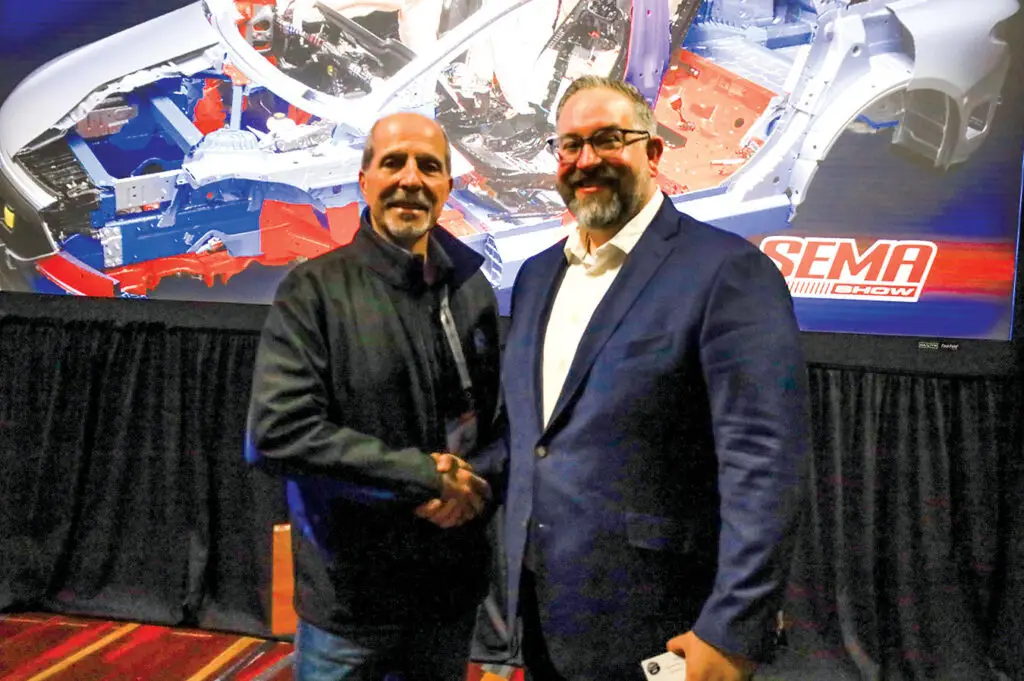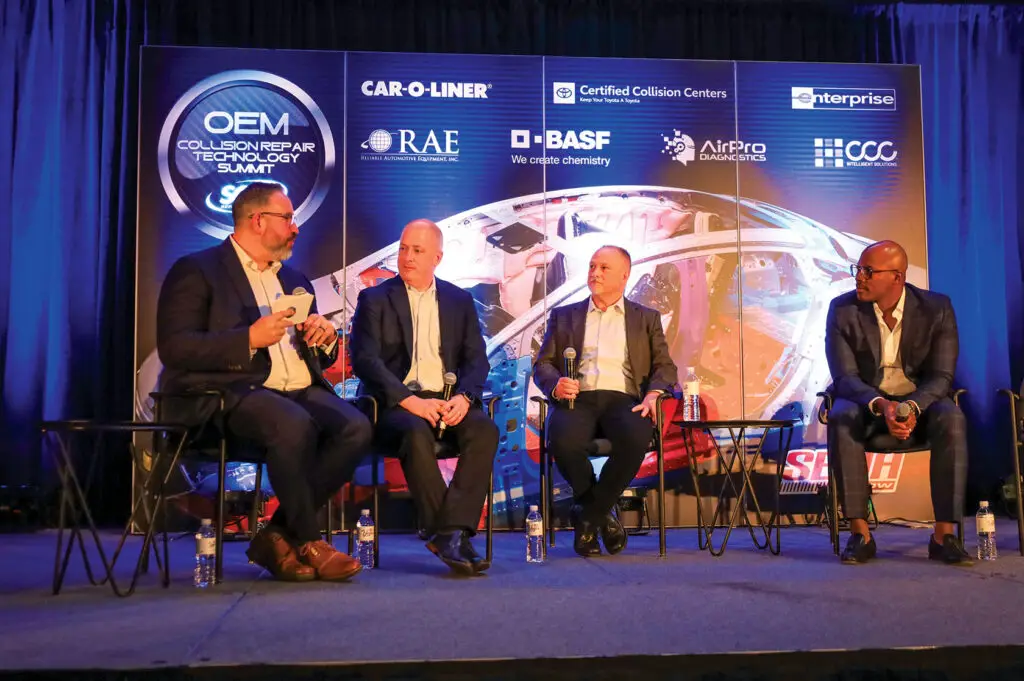Automobile manufacturers are beginning to provide their own insurance options to enhance the customer experience and prevent future accidents.
by David Ribeiro, senior industry relations advisor, Automotive Retailers Association (ARA)
If you attend the SEMA Show in Las Vegas, and you are in the business of collision repair, one of the “must-do” events is the OEM Collision Repair Technology Summit, conducted by the Society of Collision Repair Specialists (SCRS). This national U.S. association represents over 6,000 collision repair businesses, and its focus is on reviewing the trends and technology that influence vehicle repair.
Led by Executive Director Aaron Schulenburg, the conference session entitled Understanding OEM Insurance offered insight into evolving repair and insurance processes.
We are all aware of the OEM’s focus on brand loyalty, and this session certainly demonstrated their commitment to improving the customer experience, but interestingly enough, the discussion related not only to the badge on the vehicle, but more importantly, to the collision repair facility. If I had to sum up the discussion, I would say that OEMs are looking for ways to improve the collision repair experience at the shop level. So, how does insurance play a role?
"OEMs are looking for ways to improve the collision repair experience at the shop level.”
Guest presenters included representatives from General Motors (GM), Rivian, and Toyota. Andrew Rose of GM’s OnStar Insurance shared a personal story from years ago when he was involved in a serious vehicle accident where, ironically, the absence of a seatbelt actually saved his life. He followed with another story that occurred about three decades later, when his daughter was also involved in a serious automobile accident, and in this incident, the seatbelt actually saved her life. These stories highlight the crucial role that the industry plays in ensuring that repaired vehicles react as they were originally engineered to during a collision.

To aid in the repair process, GM is expanding its insurance involvement to help achieve a zero-crash goal. Using GM’s OnStar Insurance system and their own staff, the manufacturer hopes to transform the repair and insurance process.
On their busiest day, the OnStar system has fielded as many as 225,000 calls. GM’s insurance concept is not completely new, having provided GMAC insurance starting in 1925, but now GM has the necessary synergies to re-enter the insurance industry, something that GM believes is a necessity to help avoid incidents. The special needs of electric vehicles further add to the need for OEM insurance.
GM’s OnStar system will provide GM access to consumers at key points, both on vehicle screens and through consumer apps. The system will have access to vehicle telematics that record information including hard braking, late-night driving habits, or driving over speeds of 80 mph. Through telematics, GM will be able to identify safer drivers and offer insurance discounts. Most importantly, GM wants to provide an unparalleled customer experience by providing triage at the accident scene, directing vehicles to its repair network, and even incorporate automatic parts ordering. Should the vehicle be a total loss, GM will even be able to offer new vehicles. This system was launched in July 2023, and it is currently in place in 30 states.
Rivian’s head of insurance, Mike Slattery, spoke about how the company’s insurance product will be partnering with an insurance carrier with dedicated resources to handle claims. The option to purchase insurance will be embedded into the digital sales process, so besides selecting options for your vehicle, you will also be able to select your insurance options. In this way, Rivian will create value propositions for the consumer. You will be able to obtain your price and your coverage for the vehicle at that moment of purchase. Admittedly, Rivian will not be offering the least, but “what they need for the right experience.”
Rivian’s intent is to ensure repairs are done correctly by accessing their collision repair network, and should the vehicle become a total loss, the customer will be prioritized for a replacement vehicle. An added benefit is that the collision repair network will provide data that can feed back to the ADAS (Advanced Driver-Assistance System) team for possible updates to safety systems.
"Through telematics, GM will be able to identify safer drivers and offer insurance discounts.”
In addition, Rivian sees their network streamlining the claims process and providing R&D with direct feedback to improve repair processes. From a claims experience perspective, Slattery provided examples of video recordings captured by the vehicle’s own cameras to outline the history of the trip/accident, noting in the data whether the autonomous drive function was on or off, what systems were engaged, and even the G-force involved in the accident. Eventually, Rivian hopes to use artificial intelligence (AI) to speed up the claims/repair process.
Rob Spencer, the president of Toyota Insurance, had a slightly different perspective. Toyota partners with other insurance carriers to make the claim process faster and easier. The company’s intent is not to become an insurance company, but rather to help protect the customer’s vehicle and ensure that they have a positive claims experience. Toyota’s product is now available in 12 states and is expanding.
The overall message from the OEMs appears to be one of helping the customer understand how their claim experience could be better by providing a proper repair reliant on OEM procedures and processes. OEMs also want selected repair shops to experience the least amount of friction to complete repairs properly. The OEMs all seem to agree that they are not in the business of being insurance companies; rather, they are in the business of keeping customers in their vehicles.

